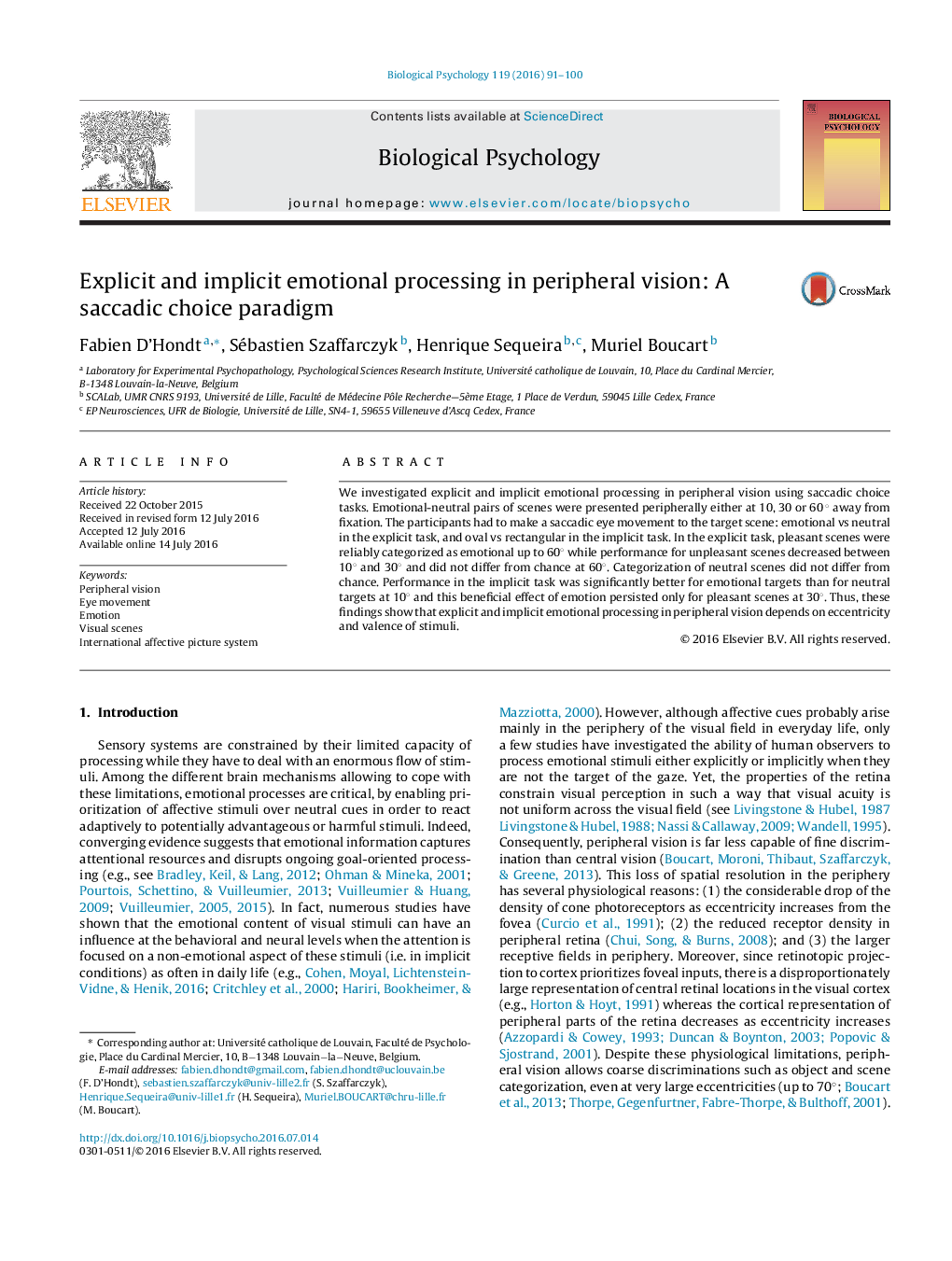| Article ID | Journal | Published Year | Pages | File Type |
|---|---|---|---|---|
| 920744 | Biological Psychology | 2016 | 10 Pages |
•Emotional processing was assessed in near and far peripheral vision.•Saccadic choice tasks were used with explicit or implicit emotional instructions.•Emotional-neutral pairs of scenes were presented at 10°, 30°, and 60° from fixation.•Unpleasant and pleasant scenes were explicitly categorized up to 30° and 60° respectively.•Implicit emotional processing was found at 10° and persisted at 30° for pleasant scenes only.
We investigated explicit and implicit emotional processing in peripheral vision using saccadic choice tasks. Emotional-neutral pairs of scenes were presented peripherally either at 10, 30 or 60 ° away from fixation. The participants had to make a saccadic eye movement to the target scene: emotional vs neutral in the explicit task, and oval vs rectangular in the implicit task. In the explicit task, pleasant scenes were reliably categorized as emotional up to 60° while performance for unpleasant scenes decreased between 10° and 30° and did not differ from chance at 60°. Categorization of neutral scenes did not differ from chance. Performance in the implicit task was significantly better for emotional targets than for neutral targets at 10° and this beneficial effect of emotion persisted only for pleasant scenes at 30°. Thus, these findings show that explicit and implicit emotional processing in peripheral vision depends on eccentricity and valence of stimuli.
